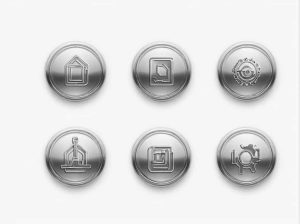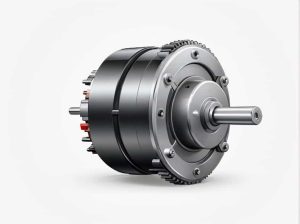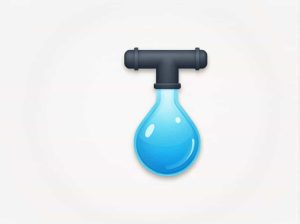Depressurization is a crucial process in the oil and gas industry that involves reducing pressure within pipelines vessels and processing systems. It plays a significant role in preventing equipment failure ensuring safety and optimizing production efficiency.
Understanding how depressurization works its types and its applications is essential for engineers operators and safety professionals in the oil and gas sector. This topic explores the principles of depressurization why it is necessary and how it is implemented in oil and gas operations.
What Is Depressurization in Oil and Gas?
Depressurization also known as pressure relief or blowdown is the controlled reduction of pressure in oil and gas processing systems. This process is necessary to:
- Prevent overpressure situations that could lead to equipment failure.
- Ensure safety by minimizing the risk of explosions or leaks.
- Comply with industry regulations related to pressure management.
When a system is depressurized gas liquid or a combination of both is released in a controlled manner to a safe disposal system such as a flare stack or a blowdown drum.
Why Is Depressurization Necessary?
1. Preventing Overpressure and Equipment Failure
Oil and gas facilities operate at high pressures and any unexpected increase in pressure can damage pipelines valves and pressure vessels. Depressurization ensures that the system stays within safe pressure limits.
2. Enhancing Safety for Workers and Equipment
Overpressure can lead to catastrophic failures explosions or leaks. By using pressure relief systems operators can protect workers equipment and the environment.
3. Emergency Shutdown Procedures
In case of an emergency such as fire gas leaks or equipment malfunction rapid depressurization helps to reduce risk and prevent escalation.
4. Compliance with Industry Standards and Regulations
Organizations like API (American Petroleum Institute) and OSHA (Occupational Safety and Health Administration) require oil and gas companies to implement proper pressure relief systems to ensure safety and compliance.
Types of Depressurization in Oil and Gas
1. Manual Depressurization
- Operators manually open valves to release pressure when needed.
- Used in non-emergency situations or routine maintenance.
2. Automatic Depressurization (Blowdown System)
- Controlled by automated safety systems.
- Activated during emergencies such as high-pressure alarms or gas leaks.
- Common in offshore platforms refineries and gas processing plants.
3. Continuous Depressurization
- Pressure is reduced gradually over time.
- Used in storage tanks and gas distribution systems.
4. Rapid Depressurization
- Pressure is released quickly in emergency scenarios.
- Prevents explosions or equipment rupture.
Depressurization Systems and Components
To safely depressurize oil and gas systems specialized equipment is used including:
1. Pressure Relief Valves (PRVs)
- Automatically release pressure when it exceeds safe limits.
- Essential for protecting pipelines vessels and compressors.
2. Blowdown Valves (BDVs)
- Used for quick depressurization in emergencies.
- Connected to flare systems for safe disposal of released gases.
3. Flare Systems
- Burn off released hydrocarbons safely.
- Prevents harmful gas emissions into the atmosphere.
4. Blowdown Drums
- Collects and separates released liquids and gases.
- Ensures safe disposal and prevents environmental contamination.
How Depressurization Works in Oil and Gas Operations
Step 1: Detecting High Pressure
- Sensors and control systems monitor pressure levels continuously.
- If pressure exceeds safe limits an alarm is triggered.
Step 2: Activating the Depressurization System
- In manual systems an operator opens the pressure relief valve.
- In automatic systems the control system opens BDVs and PRVs.
Step 3: Releasing Excess Pressure
- Gas or liquid is released to flare stacks or blowdown drums.
- Pressure gradually reduces to a safe level.
Step 4: Monitoring and System Reset
- Operators check if pressure has returned to normal levels.
- The system is reset for continued safe operation.
Challenges in Depressurization
1. High Temperature Effects
- Rapid depressurization can cause temperature drops leading to pipeline freezing and material stress.
2. Environmental Impact
- Gas releases can contribute to air pollution if not properly managed.
- Flaring systems help to reduce emissions safely.
3. Equipment Wear and Tear
- Frequent depressurization can cause valve damage and corrosion.
- Regular maintenance and inspection are required.
4. Pressure Fluctuations
- Uncontrolled depressurization can cause shock waves in pipelines.
- Proper control mechanisms must be in place.
Depressurization vs. Pressure Relief: What’s the Difference?
| Feature | Depressurization | Pressure Relief |
|---|---|---|
| Purpose | Reduce system pressure gradually | Release excess pressure instantly |
| System Type | Manual or automatic | Typically automatic |
| Common Uses | Emergency shutdown routine maintenance | Preventing overpressure |
| Where Used | Pipelines vessels refineries | Valves compressors gas separators |
Best Practices for Safe Depressurization
1. Regular Equipment Inspection
- Check valves pipelines and sensors for wear and tear.
- Replace damaged parts before failures occur.
2. Implementing Advanced Control Systems
- Use real-time pressure monitoring to detect issues early.
- Automated systems improve safety and response time.
3. Training Personnel for Emergency Response
- Ensure operators know how to handle depressurization events.
- Conduct regular safety drills.
4. Using Environmentally Friendly Flaring Techniques
- Reduce greenhouse gas emissions by optimizing flare systems.
- Implement gas recovery solutions where possible.
Future Innovations in Depressurization Technology
1. Smart Sensors and AI-Based Monitoring
- Artificial intelligence (AI) can predict pressure fluctuations before they occur.
- Improves preventive maintenance and system efficiency.
2. Zero-Emission Depressurization
- Development of gas recovery systems to minimize emissions.
- Reduces flaring and environmental impact.
3. Advanced Materials for High-Pressure Systems
- New corrosion-resistant alloys extend equipment lifespan.
- Reduces maintenance costs and improves reliability.
Depressurization is an essential safety and operational process in the oil and gas industry. It helps prevent overpressure-related accidents protects equipment and ensures compliance with industry standards.
By implementing effective pressure relief systems maintaining equipment and adopting advanced technologies oil and gas companies can enhance safety reduce costs and minimize environmental impact. As technology advances AI monitoring zero-emission systems and improved materials will continue to improve the efficiency and sustainability of depressurization in oil and gas operations.



